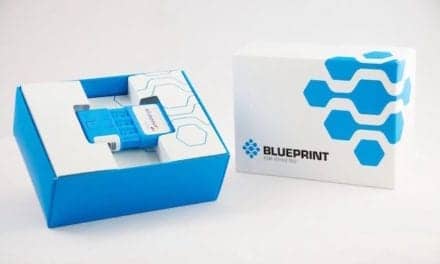The enhanced liver fibrosis (ELF) testing service, from Siemens Healthineers, Erlangen, Germany, is now available in the United States. The testing service is provided by the Siemens Healthcare Laboratory, a unit of Siemens Healthineers. The laboratory can test samples submitted from Washington, DC, Puerto Rico, and all states except New York, where approval is pending.
Using a small blood sample from a patient, the ELF test provides a simple, unitless numeric score via an algorithm by combining the quantitative measurements in a serum sample of three direct markers of liver fibrosis: aminoterminal propeptide of type III procollagen (PIIINP), hyaluronic acid (HA), and tissue inhibitor of metalloproteinase 1 (TIMP-1). The ELF score can assist patient care by identifying people with chronic liver disease, including nonalcoholic fatty liver disease (NAFLD), and stratifying those at risk of progressing to liver-related events.1
“Identifying patients with advancing liver fibrosis is a challenge for physicians given the silent nature of the disease. Combined with the increasing burden of liver fibrosis, the demand for efficient, accurate, and safe means for testing patients who are at risk of liver-related outcomes becomes increasingly important for helping manage their condition,” says Patrick Joseph, MD, medical director of Siemens Healthcare Laboratory. “Our ELF testing service, which measures three direct markers of fibrosis, represents a clinically validated, reliable, and convenient testing solution for physicians to help manage patients with progressing liver fibrosis associated with NAFLD and nonalcoholic steatohepatitis [NASH].”
Chronic liver disease is characterized by liver fibrosis, leading to cirrhosis and life-threatening liver-related outcomes. The disease may be caused by viral hepatitis, excess alcohol consumption, or metabolic diseases such as NASH, which is a form of NAFLD.
The burden and costs of chronic liver disease are increasing dramatically as a result of the high prevalence of NAFLD associated with the obesity epidemic. In the United States alone, NASH affects around 1.5% to 6.45% of the general population, and NAFLD is predicted to be the leading indication for liver transplantation within a decade.2,3 Consequently, there is significant need for convenient, reliable, and reproducible blood tests like the ELF testing service that help identify patients with signs and symptoms of chronic liver disease.
“Enabling physicians to both accurately measure as well as prospectively predict liver disease progression is one more way we are expanding precision medicine for our customers and their patients,” says Sebastian Kronmueller, head of molecular services at Siemens Healthineers.
The ELF testing service has not been cleared or approved by FDA. For more information, visit Siemens Healthineers.
References
- Day J, Patel P, Parkes J, Rosenberg W. Derivation and performance of standardized enhanced liver fibrosis (ELF) test thresholds for the detection and prognosis of liver fibrosis. J Appl Lab Med. 2019;3(5):815–826; doi: 10.1373/jalm.2018.027359.
- Younossi ZM, Koenig AB, Abdelatif D, Fazel Y, Henry L, Wymer M. Global epidemiology of nonalcoholic fatty liver disease: meta-analytic assessment of prevalence, incidence, and outcomes. Hepatology. 2016;64(1):73–84; doi: 10.1002/hep.28431.
- Pais R, Barritt AS 4th, Calmus Y, et al. NAFLD and liver transplantation: current burden and expected challenges. J Hepatol. 2016;65(6):1245–1257; doi: 10.1016/j.jhep.2016.07.033.
Featured image:
Photo © Aleksandra Chebysheva courtesy Dreamstime (ID 111294833).





